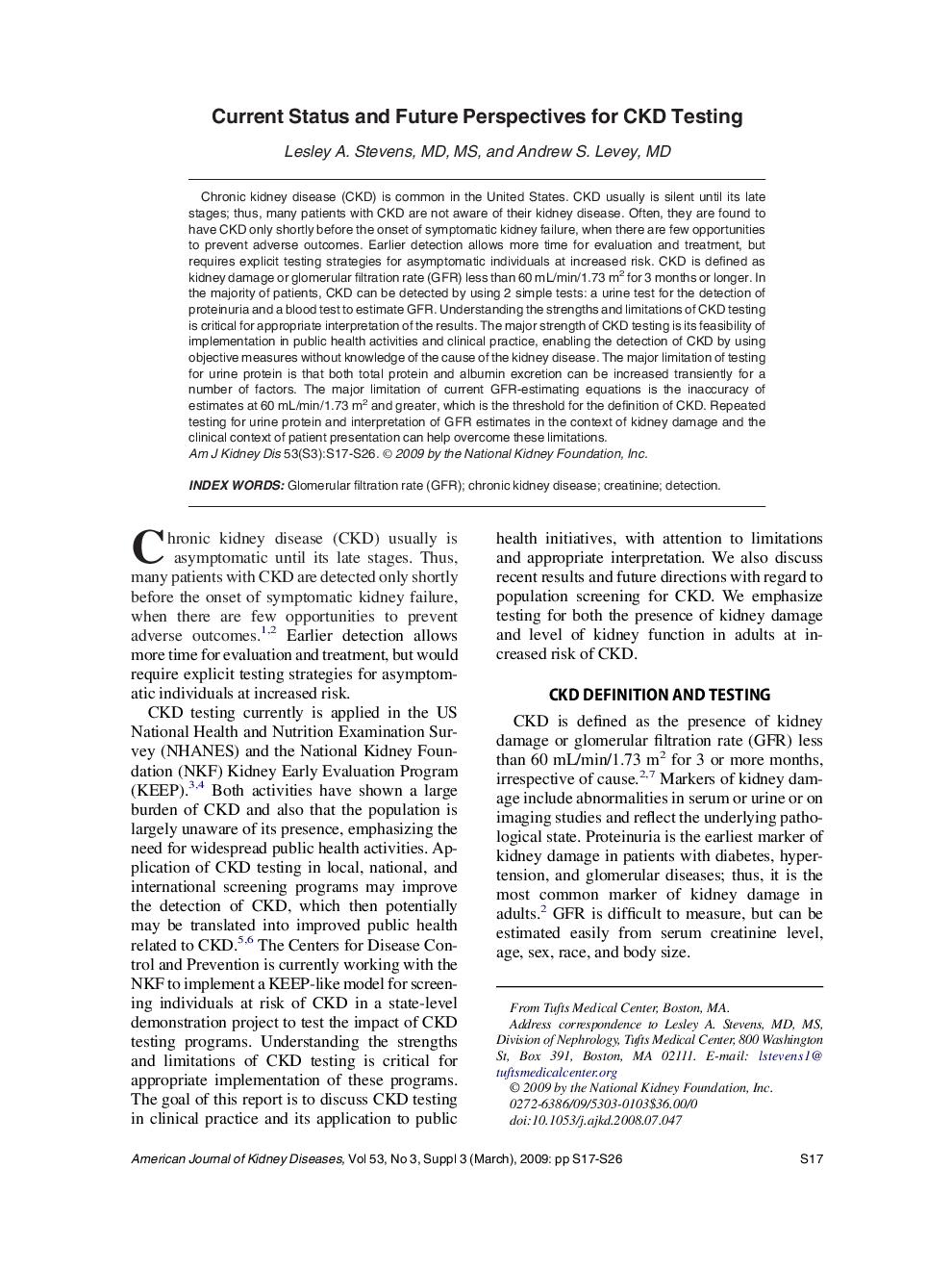| Article ID | Journal | Published Year | Pages | File Type |
|---|---|---|---|---|
| 3851254 | American Journal of Kidney Diseases | 2009 | 10 Pages |
Abstract
Chronic kidney disease (CKD) is common in the United States. CKD usually is silent until its late stages; thus, many patients with CKD are not aware of their kidney disease. Often, they are found to have CKD only shortly before the onset of symptomatic kidney failure, when there are few opportunities to prevent adverse outcomes. Earlier detection allows more time for evaluation and treatment, but requires explicit testing strategies for asymptomatic individuals at increased risk. CKD is defined as kidney damage or glomerular filtration rate (GFR) less than 60 mL/min/1.73 m2 for 3 months or longer. In the majority of patients, CKD can be detected by using 2 simple tests: a urine test for the detection of proteinuria and a blood test to estimate GFR. Understanding the strengths and limitations of CKD testing is critical for appropriate interpretation of the results. The major strength of CKD testing is its feasibility of implementation in public health activities and clinical practice, enabling the detection of CKD by using objective measures without knowledge of the cause of the kidney disease. The major limitation of testing for urine protein is that both total protein and albumin excretion can be increased transiently for a number of factors. The major limitation of current GFR-estimating equations is the inaccuracy of estimates at 60 mL/min/1.73 m2 and greater, which is the threshold for the definition of CKD. Repeated testing for urine protein and interpretation of GFR estimates in the context of kidney damage and the clinical context of patient presentation can help overcome these limitations.
Related Topics
Health Sciences
Medicine and Dentistry
Nephrology
Authors
Lesley A. MD, MS, Andrew S. MD,
